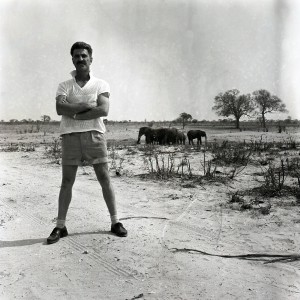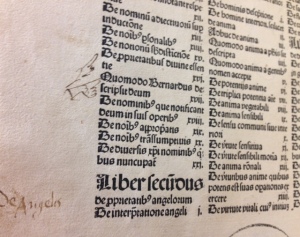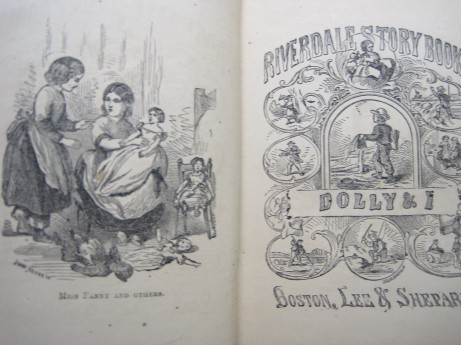In June, I attended the Association of Canadian Archivists (ACA) annual conference in Regina, Saskatchewan.

The venerable Hotel Saskatchewan, site of the 2015 ACA conference
The Association of Canadian Archivists is the national professional organization for archivists in Canada outside of Quebec. Here are some highlights of this year’s event.
TAATU – the technology unconference
If you’re into tech, one of the best parts of any ACA conference is The Archives and Technology Unconference (TAATU). Hosted by the Technology and Archives Special Interest Section (TaASIS), TAATU is laid-back and designed to be non-intimidating for non-techies, but it also has its serious side, perhaps this year more so than others. As more and more Canadian archives adopt AtoM as their holdings management database and experiment with its sister product, digital preservation system Archivematica, TAATU has become a valuable venue for sharing information, including success stories and lessons learned, for both open source products.
This year’s highlights included lightning talks on:
- a new Archivematica feature to accommodate the hierarchical arrangement of digital records;
- Artefactual Systems’ work with the Museum of Modern Art to develop a repository management system, Binder
- The development of a Canadian accession standard and opportunities for community feedback
- Updates to donation agreements to take into account digital preservation considerations, including issues around ownership and fair market value, the ethics of forensic disk imaging, and options for Creative Commons licensing
- Physical storage management functionality improvements in AtoM.
There was also useful speculation and debate regarding the role and nature of the national and provincial/territorial network databases (MemoryBC in British Columbia, for example, and Archives Canada at the national level) and the issues surrounding their maintenance and synchronization. It is likely that this will be a key issue to be dealt with by the archival community over the next year or two.
The lightning talks were followed by a meeting of the Canadian AtoM development working group, for now a loose affiliation of AtoM users who are looking for ways to pool resources to develop requirements and fund development of the software.
News from Library and Archives Canada
The biggest buzz of the conference came during Friday’s plenary session by Librarian and Archivist of Canada, Guy Berthiaume. Part status report on Library and Archives Canada’s activity since his appointment in June 2014, part articulation of his vision for the future, Berthiaume took the opportunity to announce the restoration of some federal funding to the archives sector. The new Documentary Heritage Communities Program will provide $1.5 million in project funding to archival organizations that do not receive regular funding from any level of government. Unlike its predecessor, the National Archival Development Program which was cut in 2012, this new program excludes government and university archives. Nevertheless, it represents a step forward for LAC and its leadership role and hopefully bodes well for the future direction of the Canadian archival system.

Guy Berthiaume addresses ACA delegates during a plenary session
Almost lost in the clamour of the funding announcement were references to two key reports published within the last year. The first, The Future Now: Canada’s Libraries, Archives and Public Memory by the Royal Society of Canada, examines the state of library and archival services and the expectations of 21st century users, and outlines recommendations for LAC, professional associations and councils, and provincial and territorial governments to strengthen both communities. The second, Leading in the Digital World: Opportunities for Canada’s Memory Institutions by the Council of Canadian Academies examines how archives, libraries, museums and galleries may embrace the opportunities and challenges posed by changes in digital technology, especially regarding their traditional roles and relevance to society. Both are well worth reading by those interested in the future directions of these institutions.
For more on M. Berthiaume’s address, the Government of Canada has made his speaking notes available.
Sessions of note
Other sessions of interest included a thought-provoking presentation on digital preservation challenges. Allana Mayer presented her independent survey results on the current state of born-digital preservation in Canada, while Adam Jansen looked at preservation requirements for records in cloud storage. Paul Wagner talked of Library and Archives Canada’s efforts to build a trusted digital repository.
Heather MacNeil and Elizabeth Shaffer gave two papers that explored the idea of archives’ role in social justice and the social consequences of poor recordkeeping. MacNeil focussed on the investigations of abuse in Scottish residential schools while Shaffer examined the design of information systems in the context of the National Research Centre for Truth and Reconciliation. Both papers reminded delegates of the fundamental role of archivists as keepers of evidence and of archives in citizens’ quests to prove rights and obligations.
On a lighter note, as part of a session on transformations within the profession and our holdings, Greg Bak of the University of Manitoba gave a whirlwind tour of the history of electronic recordkeeping from punch cards to cloud storage. Young archivists in the audience laughed at images of early Apple computers, considering them museum pieces; those of us in mid-career were horrified to realize we used them as undergraduates.

One of Greg Bak’s slides illustrating obsolete technology
It was also refreshing to hear Red Deer and District Archivist Lindsay Ballagray report on her institution’s new approach to copyright. Rooted in a desire to remove barriers on access and use, they now take a more simplified view with the elimination of commercial use and permission fees, greatly reducing paperwork and eliminating the need for enforcement. Delegates almost cheered Lindsay’s presentation, which was gratifying to witness. Our own decision to eliminate these in 2008 was certainly not as popular among our colleagues.
I had the pleasure of chairing the session ‘Building and Sustaining Archives’ and delivering commentary on the to papers. One reported the results of a recent Society of American Archivists survey of municipal archives and the other the tale of starting a municipal archives from the ground up, near to home at the City of Coquitlam.
Saturday’s plenary was also worthy of note. Anthea Seles, currently with the National Archives of the UK, told a cautionary tale of a future where archivists are not part of the conversation on managing and preserving big data, arguing that our continued convergence with other memory organizations emphasises our cultural function and ignores our more important role as facilitators of accountability and transparency. Encouraging alignment with auditors, lawyers and scientists, she challenged delegates to change the way we talk about archives, to build relationships and reach out and take in new knowledge.
In his commentary, Seamus Ross of University of Toronto’s Faculty of Information Science agreed that the profession is at a crossroads, but that we cannot lose sight of the fact that ours is an ancient profession and one with a robust intellectual body of knowledge. Arguing that there are many areas where we used to control the field, including knowledge of authenticity and provenance, he noted we need to engage in research across disciplines and demonstrate how our theoretical framework can inform those disciplines, including those of law, finance, and data science. He noted that we also need graduate students who understand data, suggesting that most archival studies students still come from the humanities and social sciences, which enables them to write a narrative, but does not give them the necessary scientific and technical background they need to truly succeed. And he suggested our professional associations are failing to meet the need as well, and must be more creative to remain relevant and effective.
Association business – state of the union
Probably the most critical topic at both the members input session and annual general meeting was the report of the Canadian Archival System Working Group. Formed after the Canadian Archives Summit in 2014, the working group has produced a renewed vision and focus for the Canadian Archival System and has published that draft strategy document for broader public consultation over the summer. As with the Royal Society and Council of Canadian Academies reports above, the re-envisioning is prompted by today’s digital challenges and the changing public expectations the digital age brings with it.
East vs. West Ball Game
And finally, no ACA conference is complete without the traditional East vs. West softball game. The West was set to defend its title and secure the coveted Doughty Cup for another year, but sadly, a prairie thunderstorm conspired and the game was called on account of rain.

Ahead of the thunderstorm, Melanie Delva of the Anglican Diocese of New Westminster Archives keeps her eye on the ball
Ever on the hunt for a silver lining, however, this archivist took solace in a leisurely evening walk to and from the field. It made for some pleasant if distant reminders of my own youth on the prairie, albeit a bit further west of Regina. Still, the architecture was familiar, as were other reminders of prairie life, like this one:

Spotted on the way to the ball game…. What’s out of place in this parking lot? At least as far as a Lower Mainlander is concerned

The outlets for plugging in your block heater!
We were there, fortunately, during a gloriously warm and dry June. Thank you to the organizers for a great conference and a chance to connect with old friends and new colleagues.


























































































